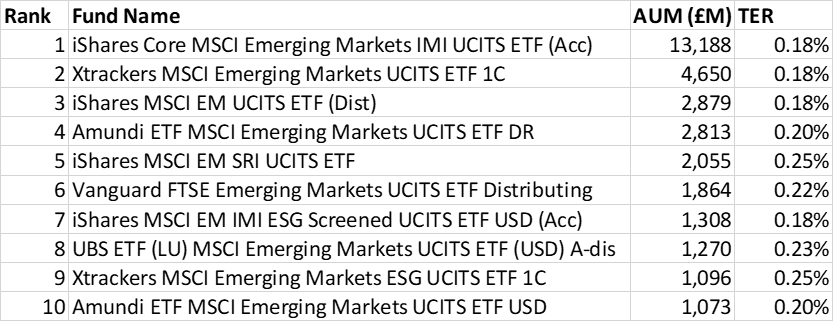Amundi halves the cost of Emerging Markets
Amundi has undercut core emerging market ETFs, launching the cheapest emerging markets ETF.
The Amundi Prime Emerging Markets UCITS ETF (PRAM), which has begun trading across European exchanges, will charge a miniscule management fee of 0.10%.
By launching PRAM, Amundi is undercutting every ETF provider in Europe, including itself. Amundi already has two emerging markets ETFs.

PRAM is nestled under Amundi’s “Prime” sub-brand, which refers to its lowest cost core ETFs. There are currently 13 ETFs under the Prime brand.
PRAM will track an index from Solactive, rather than the more famous benchmark from MSCI. Using Solactive as the index provider is how PRAM achieved its cost savings. Solactive has been a disruptor in this space for many years, providing similar exposure for more reasonable fees.
The index name is Solactive GBS Emerging Markets Large & Mid Cap USD index, which is made of 1,600-odd large and mid-cap companies from emerging markets countries. It will correlate tightly with the more-famous MSCI EM Index ( 1,400 constituents).
Bernie’s commentary – rebates, spreads, CGT
The logic behind Amundi’s Prime ETFs is clear. Low cost ETFs attract the most inflows. Fees determine market share. And providing the cheapest ETFs is easy as incumbents don’t use Solactive indexes. They instead use brand name indexes like the FTSE 100, MSCI World S&P 500, etc.
But under-pricing faces three challenges. The first is rebates. ETF fee rebates are endemic. When large pension funds buy an ETF, they don’t go in at 20 – 40 basis points. They always negotiate fees down. (Or at least the smart ones do). This means under-pricing an incumbent is not straightforward. As incumbents retaliate by offering rebates behind closed doors.
The second is spreads. Bigger ETFs tend to be cheaper to buy and sell. And for tactical traders – who buy and sell frequently – the trading costs can be more important than the annual management fee. Tactical traders rarely stay invested for a full year and thus rarely wear the full management fee. And on trading costs, the incumbent iShares ETF clearly has an advantage.
The third is capital gains taxes, CGT creates a lock-in effect. Once you pick a fund, if it rises in value, you incur CGT if you sell out. This gives an obvious incentive to stay put.
Still, there can be other good reasons for launching PRAM. These include reclaiming market share, protecting a low-cost brand identity, rounding out a product suite, or a big client has requested it. Amundi’s other Prime ETFs are steadily collecting assets. Let’s see how this goes.


.png)

